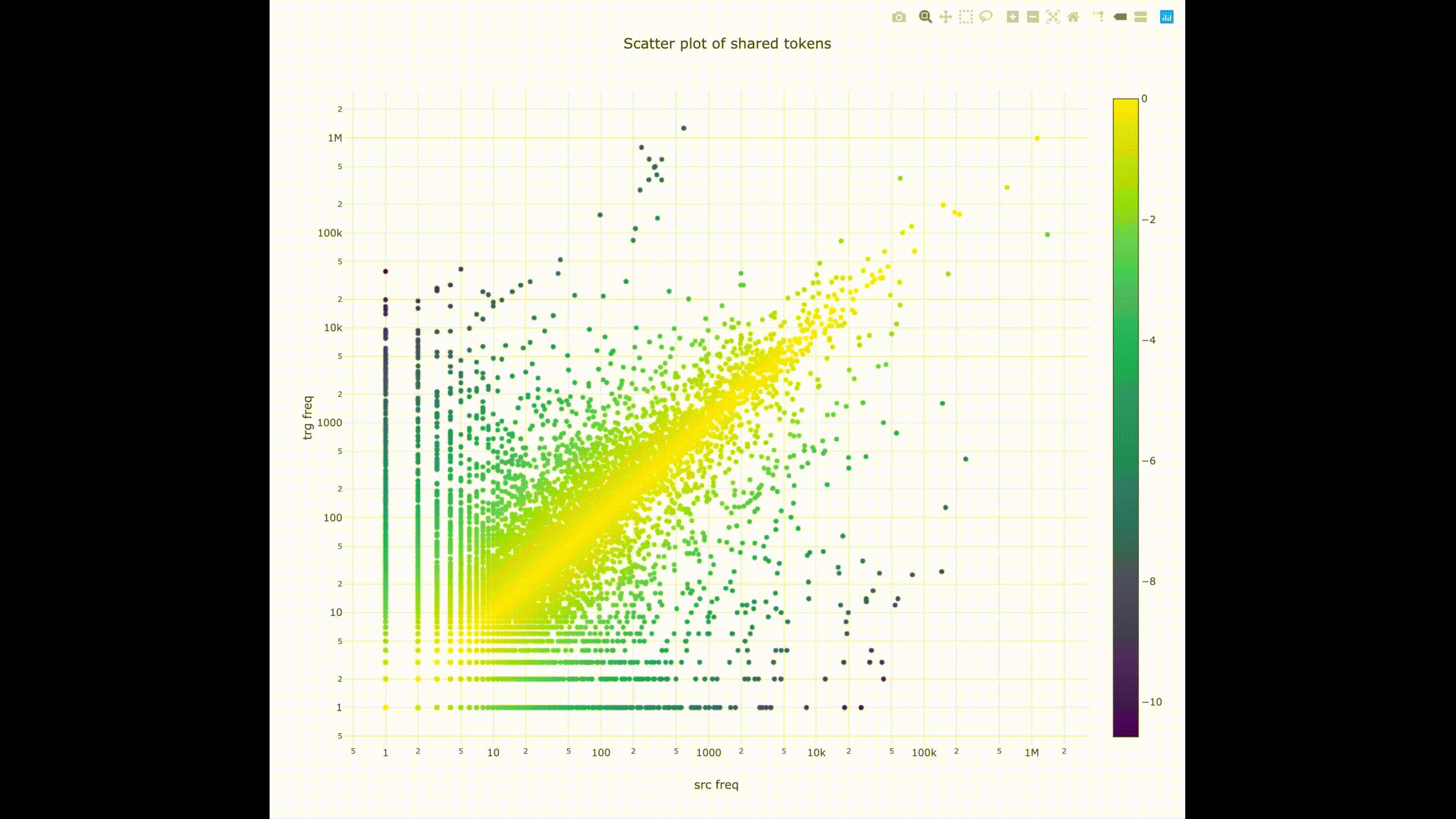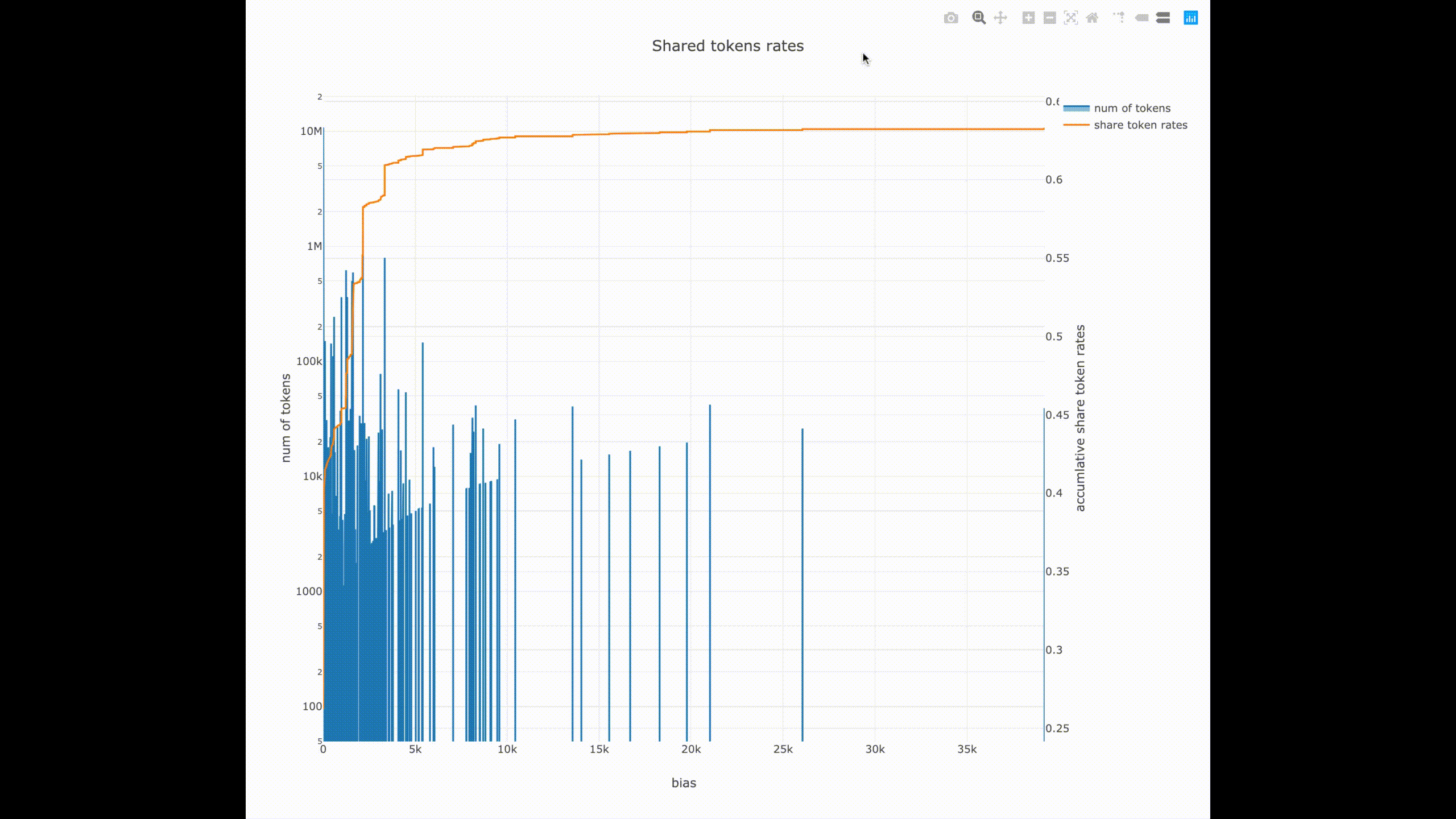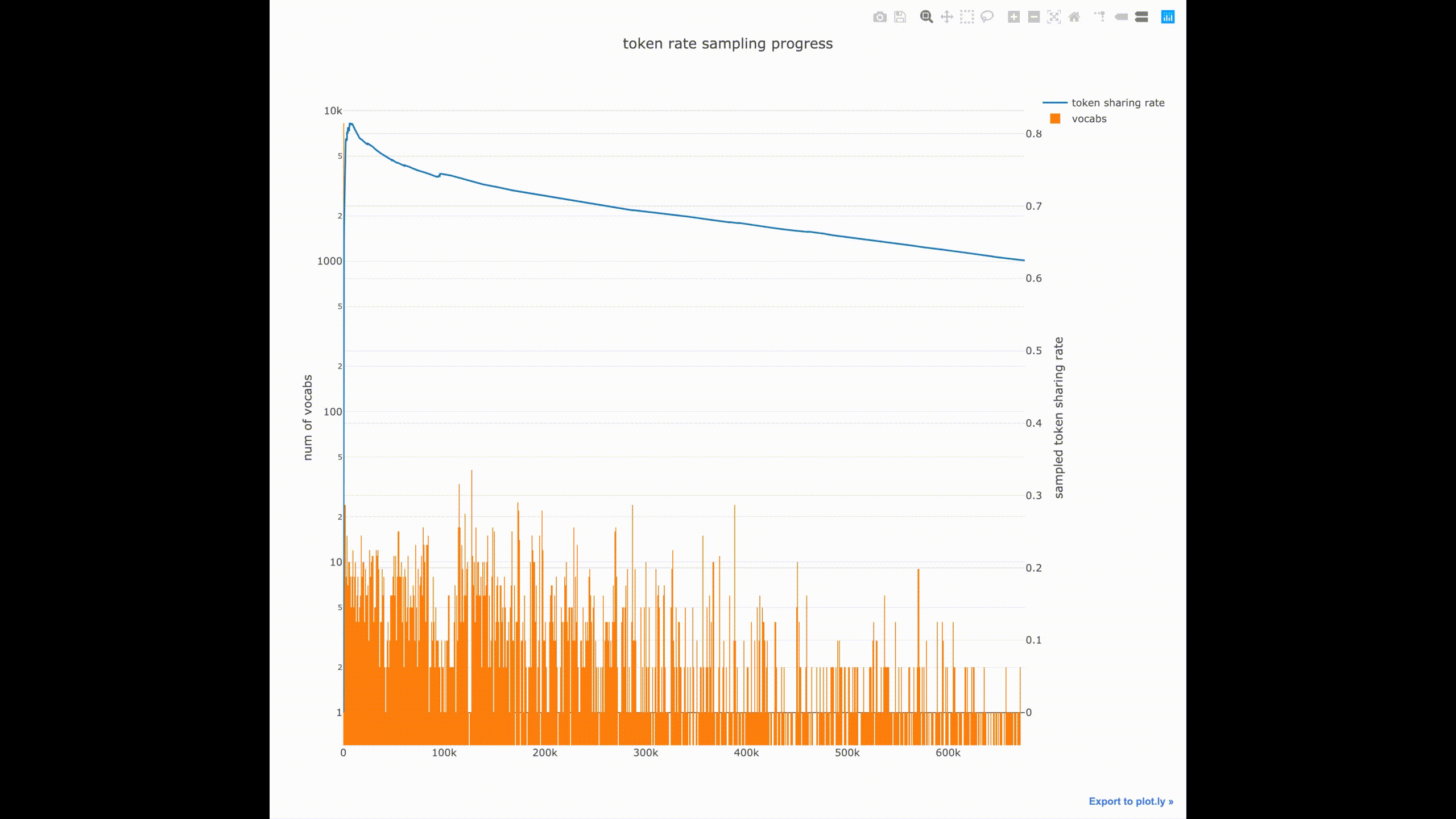Textprep is an analyzing tool for both parallel and non-parallel corpus and its down-stream Natural Language Processing and Machine Translation tasks. It is designed especially for logographic languages such as Chinese and Japanese, which can help you do the following:
- Decomposing characters into ideographs and strokes. (Thanks to the CHISE project and cjkvi-ids project)
- Drawing offline plot.ly graphs showing relationship between shared types and tokens between two languages.
- Sampling translation corpus to given token shared rate.
numpy==1.16.0
tqdm==4.29.1
plotly==3.5.0
python textprep.py {decomp,draw,sample} ...
Details pleas use -h.
usage: textprep.py decomp [-h] [-r REVERSE] -v VOCAB_DECOMP [--vocab VOCAB]
[-l {ideo_raw,ideo_finest,stroke}] [-i IDC]
[-o OUTPUT_FNAME]
fname
positional arguments:
fname the input fname.
optional arguments:
-h, --help show this help message and exit
-r REVERSE, --reverse REVERSE
whether to reverse process the input file. If True:
compose back to normal text file from input fname and
vocab fname; Else: do the normal decomposition.
-v VOCAB_DECOMP, --vocab_decomp VOCAB_DECOMP
the vocab_decomp fname. in decomp process, vocab file
will be generated automatically; in comp process,
vocab file must exist to be read from.
--vocab VOCAB the vocab fname. not given, generate vocab from fname.
-l {ideo_raw,ideo_finest,stroke}, --level {ideo_raw,ideo_finest,stroke}
to what level should the decomposition be.
-i IDC, --idc IDC whether to include structual IDCs in the decomp.
(yes/no)
-o OUTPUT_FNAME, --output_fname OUTPUT_FNAME
the output file name.
usage: textprep.py draw [-h] [--type {scatter,rate,both}]
[--output_prefix OUTPUT_PREFIX]
src_fname trg_fname
positional arguments:
src_fname the source file name.
trg_fname the target file name
optional arguments:
-h, --help show this help message and exit
--type {scatter,rate,both}
whether to only draw shared tokens
--output_prefix OUTPUT_PREFIX
output prefix.
Note that this command requires heavy computation depends on your dataset.
usage: textprep.py sample [-h] [-n N] [-r R] [-k K] [-d DRAW]
src_fname trg_fname
positional arguments:
src_fname source file name.
trg_fname target file name.
optional arguments:
-h, --help show this help message and exit
-n N num of sampled sentences. should not larger than num
of lines in either files.
-r R the target share token rate for sampling.
-k K num of sents extracted for each sample step.
-d DRAW, --draw DRAW if given, draw a graph of sampling process. should end
with .html
--src_output SRC_OUTPUT
source output filename.
--trg_output TRG_OUTPUT
target output filename.
usage: vocab.py [-h] [input [input ...]] vocab
positional arguments:
input input fnames.
vocab output vocab fname.
original text:
机器人 行业 在 环境 问题 上 的 措施
ideograph:
⿰木几⿳吅犬吅人 ⿰彳亍⿱⿻⿰丨丨⿰丶丿一 ⿸⿱⿻一丿丨土 ⿰王不⿰土竟 ⿵门口⿺是页 ⿱⺊一 ⿰白勺 ⿰扌昔⿰方㐌
ideograph-finest:
⿰木几⿳⿰口口犬⿰口口人 ⿰彳⿱一⿱一亅⿱⿻⿰丨丨⿰丶丿一 ⿸⿱⿻一丿丨⿱十一 ⿰
⿱一⿱十一⿱一⿸⿸丿丨丶⿰⿱十一⿱⿱⿱⿱⿱丶一丷一日⿰丿乚 ⿵门口⿺⿱日⿱一龰页 ⿱⺊一 ⿰白⿹勹一 ⿰扌⿱⿱⿻十丨一日⿰⿱⿱丶一⿰丿𠃌⿱𠂉也
stroke:
⿰⿻⿻一丨⿰丿乀⿰㇓乙⿳⿰⿱⿰丨𠃌一⿱⿰丨𠃌一⿻一⿸丿乀⿰⿱⿰丨𠃌一⿱⿰丨𠃌一⿸丿乀 ⿰⿳丿丿丨⿱一⿱一亅⿱⿻⿰丨丨⿰丶丿一 ⿸⿱⿻一丿丨⿱⿻一丨一 ⿰⿱一⿱⿻一
丨一⿱一⿸⿸丿丨丶⿰⿱⿻一丨一⿱⿱⿱⿱⿱丶一⿰丶丿一〾⿵⿰丨𠃌⿱一一⿰丿乚 ⿵⿰
⿱丶丨𠃌⿱⿰丨𠃌一⿺⿱〾⿵⿰丨𠃌⿱一一⿱一⿺⿰丨一⿸丿乀⿳一丿⿵⿰丨𠃍⿸丿乀 ⿱
⿰丨一一 ⿰⿱丿〾⿵⿰丨𠃌⿱一一⿹〾〾⿻丿𠃌丶 ⿰⿻⿻一亅㇀⿱⿱⿻⿻一丨丨一〾⿵⿰丨𠃌⿱一一⿰⿱⿱丶一⿰丿𠃌⿱⿰丿一⿻丨⿻𠃌乚
Scatter plot can show the shared tokens and their frequencies in both languages.
Rate plot can show the bias of shared tokens and the cumulative share token rate.
Sample plot can show the on-the-fly share token rate and new vocabularies for each sample step.
- First commit: 2018/10/09
- Create the basic decompse function.
- Add apis to call other word tokenization tools (dict-based tokenization (Jieba, Mecab, Kytea), subword tokenization (Sentencepiece unigram/bpe), etc)
- Second commit: 2019/01/17
- Remove apis for other tokenizers
- Add draw and sample functions.


